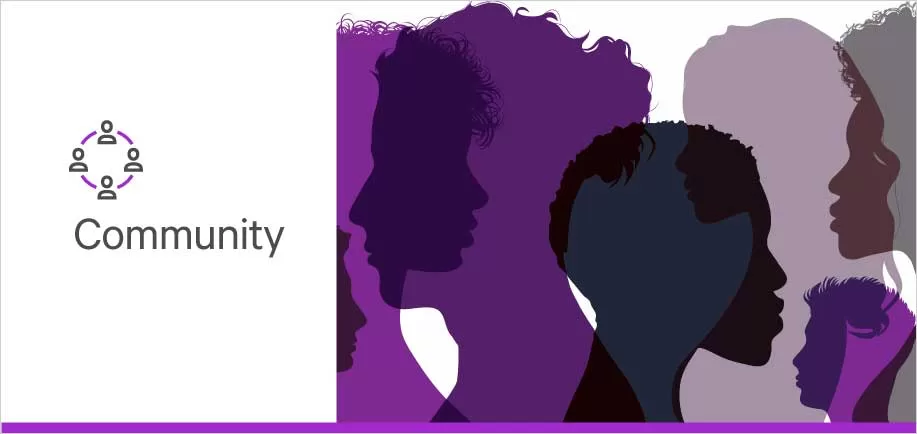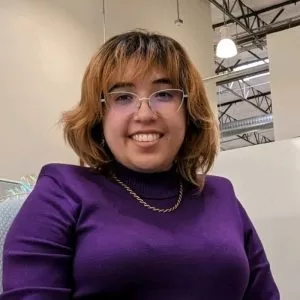
Vector Laboratories is closed for the President’s Day on Monday, February 19th. We will be back in the office on Tuesday, February 20th.
We will respond to emails upon our return. Have a wonderful day.
Menu
Vector Laboratories is closed for the President’s Day on Monday, February 19th. We will be back in the office on Tuesday, February 20th.
We will respond to emails upon our return. Have a wonderful day.


My name is Melina Villasenor, and I am a production supervisor for the formulation of products at Vector Laboratories. New to the biotech and sciences professional space, most of my time is spent in or around lab spaces, yet labs tend not to have people that look like me.
As a Mexican-American, I stand among a limited number of Latinx folks striding forward into the realm of sciences. The good news is, our representation has seen a gradual rise over the years, thanks in large part to the increasing visibility of successful Latinx professionals in STEM fields. Nevertheless, on a typical day, it’s just me and three other Latinx colleagues amongst the many other people making regular appearances in the lab.
As a Latinx, queer, non-binary, disabled individual, it has always been rare for me to see people in STEM who “look like me.” It reminds me of a piece of wisdom shared by a mentor: “Life happens somewhere in the middle;” when it comes to diversity, this couldn’t be truer. We are built to exist in intersections, and recognizing the way humans are multi-faceted in experiences, expression, culture, etc., helps us create unique spaces full of growth opportunities. As humans, we all fall into different diversity categories, and so creating space for more people that “look like me” allows for a more legitimate, human experience in the workspace.
That said, it’s not as simple as it sounds. Ensuring representation in STEM fields requires equitable opportunities for underrepresented groups. It starts by nurturing young minds, encouraging them to dream freely, and shielding them from the discriminations that marginalized groups often face that prevent them from even starting the journey down a STEM path.
My high school chemistry teacher, Mr. Escobar, an immigrant from El Salvador, was a beacon of encouragement as I pursued my love for science amidst a sea of challenges. An encounter with my principal, who tried to dissuade me from taking AP Chemistry due to its perceived difficulty and the possibility of extra funding should the primarily minority class be dismantled from a single student dropping it, threatened to derail my enthusiasm. However, it was Mr. Escobar’s unwavering faith in his students’ potential, combined with his own success story in the STEM field, that truly bolstered my resolve to continue on this challenging yet rewarding path.
As I’ve progressed in my career, I’ve met many individuals from marginalized communities, each with a similar narrative. A mentor who believed in them, a professor who understood them, and numerous hurdles they overcame. It’s a shared sentiment among us that having representation from the get-go would have made our journeys less daunting. But we undertake these challenges with the resolve to become the representation we lacked, to inspire the next generation.
Today, we find ourselves guiding peers, supporting local communities, and mentoring the younger generation to traverse the path we once took to our careers in STEM. Providing mock interviews and resume reviews can be especially beneficial for college students struggling to make connections and advocate for themselves during job hunting. Outreach and mentorship programs can be even more impactful, offering young individuals a glimpse into their potential STEM career path, and equipping them with the tools, tips, and support they might not have had otherwise.
Addressing diversity requires an equitable approach. Simply treating everyone equally, by assuming everyone has had the same experiences or journey in a STEM career, can unintentionally undermine the unique impact of diversity on individuals and within both corporate and academic spaces. It’s equity, rather, that lets us extend an extra hand, allocate more resources, and provide additional funding to those groups who need it the most.
My hopes lie in the community marginalized groups can bring to each other and in companies supporting these efforts by proudly presenting as allies to minority groups and funneling funds into communities with high populations of minorities who might not have the necessary tools to thrive. Champion diversity in STEM spaces. Encourage marginalized voices to speak about their experiences. Include them in talent acquisition, in decision-making, and in more than just the celebration of cultural history months.
Actively advocating for diversity is key. We must resist falling into the trap of the bystander effect, simply assuming that someone else will instigate the needed changes. The responsibility and opportunity lie with each one of us, shaping our individual paths while collectively transforming the landscape of STEM for the generations to come.





Stay in the Loop. Join Our Online Community
Together we breakthroughTM

©Vector Laboratories, Inc. 2024 All Rights Reserved.